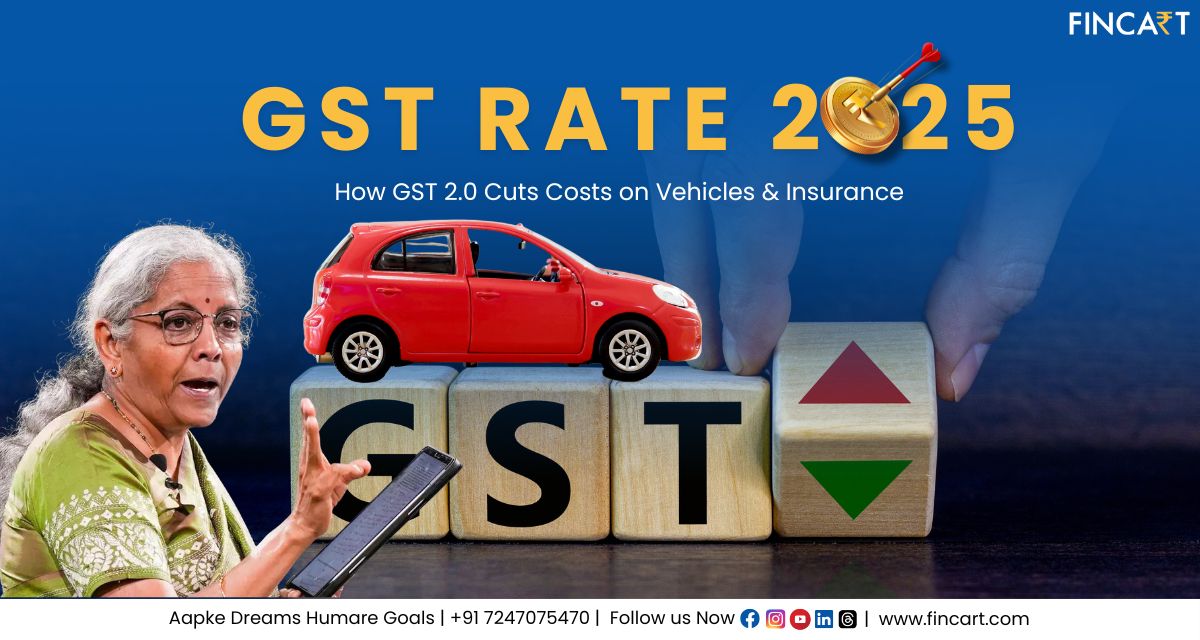The Indian government has just delivered a massive Diwali gift — not just to car buyers, but to policyholders too. The latest vehicle insurance gst rate has eliminated cess on automobiles, and even removed GST from individual life and health insurance premiums.
Let’s break down what these changes mean for you as a consumer, investor, and insurance buyer — and how you can make the most of this festive season windfall.
GST 2.0 – The Big Picture
The GST Council has overhauled India’s Goods and Services Tax structure, consolidating the complex system into just two main slabs – 5% and 18%, with a 40% slab reserved for luxury and sin goods like large cars and SUVs.
Slashing vehicle insurance gst rate is not just a policy change — it’s a strategic move to boost consumption, ease compliance for businesses, and put more money back into your pocket.
Here’s what has changed across two sectors that touch nearly every Indian household — automobiles and insurance.
1. Automobiles: Car Prices Get a Festive Season Reset
If you were holding off on buying a car, you might just have timed it perfectly.
Small Cars & Light Vehicles
- Old Tax: 28% GST + 1–3% cess (effective rate ~29–31%)
- New Tax: 18% GST flat
This is a direct price cut of 12–13% on small cars like Maruti Alto, Swift Dzire, Tata Punch, Nexon, Hyundai i10, Baleno and more. For budget-conscious buyers, this new vehicle insurance gst rate is a significant saving.
Mid-Size & Large Cars
- Old Tax: 28% GST + 17–22% cess (effective rate ~45–50%)
- New Tax: 40% GST flat (no cess)
While the rate still seems high, the removal of cess simplifies pricing and makes tax compliance easier for automakers. Expect a slight drop in on-road prices.
SUVs & Utility Vehicles
- Old Tax: 28% GST + 20–22% cess (effective rate ~43–50%)
- New Tax: 40% GST flat
This includes popular SUVs like Mahindra Thar, Scorpio, XUV700, Hyundai Creta, Toyota Innova Crysta. Automakers have already announced big price cuts:
- Mahindra: Up to ₹1.45 lakh off on Scorpio-N, XUV700, Thar
- Toyota: Up to ₹3.5 lakh off on Fortuner, Innova, Legender
- Hyundai: Up to ₹2.4 lakh price cut across models
With these cuts, car buying just became more affordable — and more predictable, with no hidden cess surprises.
Why Reducing Vehicle Insurance GST rate Matters
- Affordability: Lower GST means lower EMIs and down payments for buyers.
- Predictability: Flat rates simplify tax calculations and make car prices transparent.
- Festive Boost: With Diwali around the corner, expect a jump in auto sales.
2. Insurance: No GST, No Extra Burden
This reform is perhaps the most consumer-friendly of them all.
What Changed
- Old Tax: 18% GST on life and health insurance premiums
- New Tax: 0% GST (completely exempt)
This applies to:
- Term Life Insurance
- Health Insurance (individual and family floater)
- ULIPs, Endowment Plans
- Senior Citizen Health Plans
Why It’s a Big Deal
- Cheaper Premiums: An 18% GST removal directly reduces your cost.
- Better Coverage Access: More middle-class families and senior citizens can now afford quality health insurance after reduced vehicle insurance gst rate.
- Boost for Financial Security: Higher insurance penetration means better protection for Indian households.
Pro Tip: If your premium is due soon, make sure you check the billing date. Only premiums invoiced after September 22, 2025 will enjoy the GST-free benefit.
3. How This Impacts Your Finances
The GST 2.0 reforms have a multiplier effect on your wallet:
- Lower Vehicle Costs → Smaller loans → Lower EMIs → More disposable income
- Cheaper Insurance → Higher protection → Lower financial stress during emergencies
- Simplified Tax Structure → Fewer compliance headaches for businesses → Better pass-through benefits to consumers
And with NBFCs and banks ready to lend aggressively during the festive season, we may see a revival in auto sales — boosting credit growth and economic activity.
Quick Reference: Old vs New GST
| Category | Old Rate (Incl. Cess) | New Rate | Impact |
| Small Cars (≤1200cc petrol, ≤1500cc diesel) | ~29–31% | 18% | 12–13% cheaper |
| Mid/Large Cars | ~45–50% | 40% | Slightly cheaper, simpler pricing |
| SUVs & Utility Vehicles | ~43–50% | 40% | Big price cuts, cess removed |
| Life & Health Insurance | 18% | 0% | Premiums cheaper |
Fincart’s Take
At Fincart, we see the new vehicle insurance gst rate as a game-changer for personal finance. The combination of lower car prices and cheaper insurance creates room for smarter budgeting, better financial planning, and improved savings potential.
If you’ve been waiting to buy a car or upgrade your health cover — this is your moment.
Key Takeaways
Car buyers: Expect significant savings, especially on small cars and SUVs.
Policyholders: Pay less on premiums, get more protection.
Investors: Rising auto sales and insurance penetration can drive sector growth — a positive for equity markets.
Consumers: Lower GST across essentials means more disposable income to invest or save.
Final Word
GST 2.0 is not just a tax reform — it’s a consumption booster. By simplifying slabs, removing cess, and eliminating GST on insurance, the government has unlocked purchasing power across sectors.
As you plan your festive spending, use this opportunity to make financially sound decisions — buy that car you’ve been eyeing, review your insurance portfolio, and ensure your financial plan is aligned with these new savings.
At Fincart, we’re here to guide you through these changes — so you can spend wisely, save strategically, and build a future-ready financial portfolio.o.




